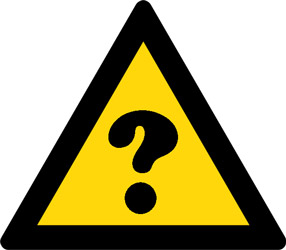
Posted to News on 12th Jul 2017, 13:37
What will happen to UK machine safety legislation after Brexit?
Doug Florence, senior consultant at SafeMech, considers what might happen to machinery safety legislation in the UK after Brexit.

One of the many aspects of Brexit requiring clarification is the future of UK safety legislation. Since UK workplace and machine safety legislation is based on EU requirements, the effects of Brexit on UK machine builders could be profound.
UK safety legislation has gradually developed during the UK's membership of the EU. It is implemented in UK law as Statutory Instruments (SIs). Part of the conditions of membership of the EU is that Directives are implemented into national law within the timeframe specified in the Directive. EU Regulations have direct effect in law in EU member states.
The EU Directives and Regulations concerning product safety aim to facilitate free trade within and with the EU member states by ensuring that the same product safety requirements apply throughout the EU. Because these are fundamentally EU free trade regulations rather than safety regulations, the UK implementing statutory instruments are all based on Article 95 of the European Community Act 1975 (ECA) which concerns free trade. ECA will be repealed if Brexit happens, leaving the UK Regulations with no legal basis.
CE marking
Conformity with the Directives and Regulations is indicated by a CE (Communite Europeene) marking on the product or packaging, plus a written Declaration of Conformity (DoC) by the manufacturer with varying degrees of third-party inspection and control by accredited Notified Organisations (NBs) appointed by EU member states. There are 22 CE marking Directives and Regulations at present and they cover a wide range of consumer and industrial products including Machinery, Industrial Safety Equipment, Toys, Medical Devices, Lifting Equipment, Gas Appliances, Consumer Electrical Appliances, etc. They are mostly concerned with aspects of safety but some concern phenomena like EMC, noise and environmental issues. The basis of conformity is with the essential requirements of the Directives and Regulations, which are further defined by harmonised EN standards. There is also the General Product Safety Directive (GPSD). The GPSD does not include any provision for CE marking but provides a general duty to supply safe products that are not covered by more specific regulations.
The key question is what happens to the UK's machine safety legislation after Brexit and how burdens on manufacturers, exporters and importers can be minimised. The general consensus in industry appears to be that what we have now (although not perfect) works pretty well and there is considerable resistance to change.
Option 1. Remain in the EU Customs Union
If we remain within the customs union, very little would change from a machine safety point of view. EU Free Trade Directives and Regulations would continue to apply. The existing arrangements could remain in place with little modification except a change in the SIs from referencing the ECA to whatever implements the customs union agreement. The government has indicated that it will not adopt this 'Soft Brexit' approach, so this is not an option unless they can be persuaded to change their mind.
Option 2. Full Mutual Recognition
Outside the customs union, for minimal disruption and impact on consumers, manufacturers, importers and exporters, there could be some kind of mutual recognition agreement (MRA) between the EU and UK for CE marking product safety Directives and Regulations and EN standards, which would leave the current situation essentially unchanged from present. The UK would continue to recognise a CE marking and the CE marking process as a means to demonstrate that a product is safe. The UK would recognise certificates issued by EU Notified organisations and EU would recognise certificates issued by UK Notified organisations. This approach would be in line with the government's stated aim of making a new customs agreement that meets the best interests of the UK. This approach might be politically difficult since it would require the UK government to continue to align UK law with developments in EU law to allow the MRA to continue to work and would require negotiation with the EU to agree to recognition of the UK laws. The UK would need to comply with future developments in EU regulations but would now have no influence on what they might be.
Option 3. UK unilaterally continues to use CE Directives
The UK could unilaterally continue to accept EU CE marking and the process and requirements set out in EU Directives and Regulations as an indicator of safe products. The UK would accept certificates from EU NBs, but there would be no reciprocal acceptance. This may not be possible outside the customs union and it has the same political problem of putting UK product safety requirements under EU control, but with even less possibility of influence. It does have the advantage of providing continuity for manufacturers and users and does not require complex negotiation with the EU. It would only be useful if UK regulations continued to be updated to mirror EU regulations as they develop.
Option 4. Retain existing SIs but stripped of EU features
The default position under the Great Repeal Bill appears to be that existing regulations would be adapted to remove all references to the EU. The articles of the current CE marking SIs are based on the assumption that implementing counties are within the EU, so they would require substantial modification to be implemented into UK law and would need to be recast as safety regulations, possibly under the Consumer Protection Act or Health and Safety at Work Act, depending on their product sector. They would become regulations internal to the UK, an EU CE marking would no longer have any legal validity in the UK, and UK Notified Organisations could no longer perform conformity assessment for CE marking and would cease to exist. Manufacturers would need to approach EU-based Notified Bodies for conformity assessment for sales into EU countries. If the UK did not continue to keep its own machine regulations aligned with EU requirements, machine builders could eventually end up needing to meet different requirements for UK and EU markets.
As a further development, the UK could create its own machine safety legislation, possibly with some kind of UK marking equivalent to a CE marking. This would require a great deal of work to develop new regulations and enforcement and to educate manufacturers and consumers. It would make life difficult for UK manufacturers wishing to export to the EU and for EU manufacturers wishing to sell goods into the UK.
Option 5. Complete deregulation
An alternative and opposite position to Option 4 would be complete deregulation of UK machine safety, replacing it with a more general duty of care on suppliers. There would be no formal criteria of what was considered a safe machine and these matters would be left to the judgement of enforcement officials and courts after incidents or enforcement inspections. The UK market would become open to equipment that does not meet any particular standards of safety or performance.
This approach involves minimal negotiating effort for the UK government and would be in keeping with their preference for reduction in regulation. It would also be the effect of a 'cliff edge' situation where no alternatives to EU-based regulations are put into effect in time.
Effects on manufacturers
Depending on what is finally arranged, and leaving aside matters such as customs tariffs, UK machine builders may find themselves in the same position as those outside the EU. Some of the effects of this would be:
- Need to become familiar with whatever UK machine safety regime replaces CE marking
- Need to keep track of developments in EU standards and regulations as well as UK regulations
- Different product features and documentation for EU and UK market
- No UK Notified Bodies so EU-Based NBs must be used where necessary
- Need to quote an EU address on CE Declarations of conformity
The revisions to current legislation will require considerable government resource to produce a workable post-Brexit system. I would implore interested parties to consider the implications and get in contact with their trade organisation, MP, BEIS and DExEU to ensure that this matter gets the attention it requires.
Want the latest machine building news straight to your inbox? Become a MachineBuilding member for free today >>


















